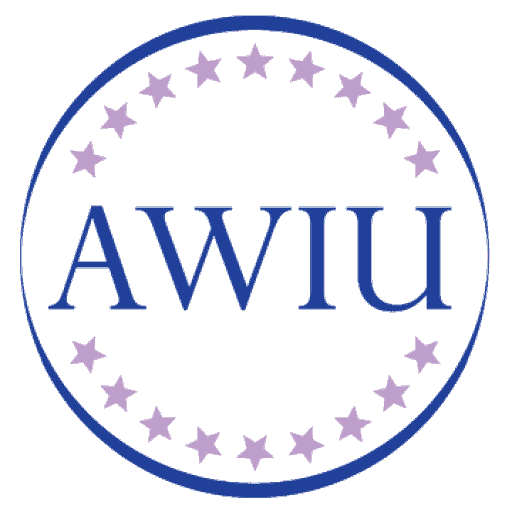American Women For International Understanding provided grant to Participatory Development Initiatives (PDI) in 2015 to help PDI impart life skills to adolescents in Nairobi Slums. Below is a progress report from our grantee PDI on the work done with the help of a grant from American Women For International Understanding.
Acknowledgements
We wish to first and foremost thank AWIU and NACC who funded the project activities of which without their support; the implementation of the project could have presented a big challenge. The Board of PDI-WOSP that has been giving most valuable advice and follow ups on project activities and ensuring all that was planned is implemented within the context of the approved plan.
PDI staff who work extra time and go out of their way to meet set targets. The sacrifices they make to make it possible and try to achieve the set targets.
Our Community representatives who devote their time and energy to the project for their valuable experience and patience.
For the Community that is accommodative, friendly and receptive and allowed time for their children to attend the classes. We say thanks to you all.
List of Acronyms
AIDS – Acquired Immune Deficiency Syndrome.
CHWs – Community Health Workers.
HIV – Human Immune Virus
AYP – Adolescents Young People
OVC – Orphans and Vulnerable Children
PDI – Participatory Development Initiatives
AWIU – American Women For International Understanding
WOSP – Widows and Orphans Support Project
Project Background
PDI is an organization founded by and run mainly by women living with HIV. It is a membership organization with an annual general meeting (AGM) held yearly and which is the highest decision-making organ of the organization. The AGM is mandated by the constitution of PDI to make decisions that bind on the organization in terms of program direction and service delivery. PDI in December 2015 entered into a partnership with American Women for International Understanding to support its project, Training of Life Skills to girls aged 10 years to 16 years old for a period of three months. PDI received a total of $2000 from AWIU to implement the above project that aimed at imparting Life Skills to young Girls. The project targeted young girls mostly in households affected by HIV and Aids and living in the resource constrained households within the Nairobi slum areas of Mukuru.
Project objectives
It was expected that by the end of the project period, below aims will be achieved:
- To create awareness of amongst young girls of their rights.
- To understand their Sexual Reproductive system
- To explore ways of Preventing Sexually Transmitted diseases with more focus on HIV
Planned project activities
Below are the activities planned to be undertaken during the 3 months project period:
- Conduct 2 day training per week for a period of 1 month to a group of 30 girls in two separate groups
- Provide Sanitary Towels
- Pay for communication and stationery costs for the training
- Project summary
This project spanned over a 2 month period of training supported by AWIU and the Rebecca circle.(Kes. 150,000). The project has been run under the able leadership of the Project Coordinator with the support of the 2 social workers and 2 volunteers within the target community of Mukuru and Kibera Slums in Nairobi and an accountant. The programme had also professional assistance on part time basis from a project officer.
The training involved participatory method, where the girls were involved through brainstorming, group discussions and plenary feedback.
HIV Prevalence rate
Kenya continues to record a decline in prevalence of HIV in the general population. The latest statistics, the Kenya indicator survey (KAIS report 2007) showed that the country has a prevalence rate of 7.4%. Consequent adjustments have placed this at 5.9%, with married couples, youth and prisoners accounting for the hardest hit segments of the population. Urban centres have higher prevalence rates at 15% while rural areas follow at 12%. It is estimated that more people live with HIV in rural areas than in urban centres due to overall population trends where more people live in the rural areas than in towns (70%: 30%).
The Kenya AIDS Strategic Framework (KASF), 2014/15 – 2018/19 identify adolescents and young people (AYP) as a priority population for the HIV response. Previously, AYP did not realize benefits commensurate with the significant investments made in the provision of HIV services, including prevention, care and treatment; despite many programmatic and political commitments. Africa has 1.8 million young people living with HIV, registers 250,000 new infections among them, and AIDS related deaths are the leading cause of death among adolescents and young people in the continent.
In Kenya, approximately 29% of all new HIV infections are among adolescents and youth (MoT/ Kenya HIV Estimates; UNAIDS/NASCOP) AIDS is the leading cause of death and morbidity among adolescents and young people in Kenya: 9,720 adolescents and young people died of AIDS in Kenya in 2014.
Free access to ARV (yes/no + details):
Kenya has done quite well in availing treatment to its population. As at end of December 2011,National AIDS control Council (NACC) reported that about 550,000 people were accessing ART, though majority did so courtesy of donor funding.
Getting to Zero
Inclusion of vulnerable/most at-risk populations in national programs:
The current national AIDS strategic plan (KNASP III) recognizes people with disabilities, men who have sex with men (MSM), prison populations ,the youth and married couples as being particularly at risk. Consequently, the national strategic plan has devoted resources to reaching out to these groups with prevention as well as care information.
Women regardless of age are even more vulnerable because of the physiological make up of their bodies besides other social factors.
It’s because of this reason that PDI women who have faced and overcome the challenges of living with the HIV virus felt the need to protect their daughters within their area of operation from getting infected in line with the strategic plan from National Aids Control Council
The government of Kenya has also rolled out strategies and efforts to prevent HIV new infections through various strategies but not the use of pills and condoms as this was rejected in a Reproductive health bill 2014 that proposed the use of pills and condoms amongst the adolescents as a means of HIV prevention.
We applaud the First Lady Margret Kenyatta with her campaign of Beyond Zero where all children must be born in Health facilities hence preventing HIV transmission at child birth through establishment of mobile clinics.
PDI’s effort majorly focuses on prevention of HIV infection as a result of social factors besides scientific factors. Hence the Imparting of Life skills to young girls.
Why the Training
Since 2002 PDI has focused on supporting women infected and affected from HIV/AIDs. Psychological support through one on one counseling has been our main activities.
Most of the words that came from our lips were raped, taken advantage of, I didn’t know what was happening, lured, way laid and hence infected with HIV/AIDs. Hence the need to prepare young girls to understand their bodies, the changes in their bodies and what it means to the general public. Hence this training is meant to empower the girls to take control over their body and negotiate safe sex.
Project achievements
15 girls who would train others or share the same information to others in schools were trained.
Trainings:
As a way of reducing infection and reinfection rates PDI embarked on a prevention campaign in the two communities which they serve by training girls who would be trainers in the community schools to train others on how to face live positively knowing their rights and be imparted with knowledge to reduce infection and re-infection amongst older youths.
They were taken through a 2 day training per week for a month in which they were trained on various aspects and strategies of HIV prevention. Topics included:
- Self awareness and self worth
- Body Changes during Puberty
- Family and friends
- Premarital sex and sexual violence
- HIV and AIDS prevention
- Myths and misconception
- Dangers of drugs, Alcohol and influence
- Sexual vulnerability and protection
- Achieving our goals and dreams
ii) Provision of Sanitary towels
30 girls who had benefited from the training were provided with sanitary towels. Each girl was also issued with a pair of two panties. This were issued after a demonstration on use and the need to maintain environmental hygiene. This was done in view that, PDI recognizes that meeting immediate sanitation basic needs is essential if young girls are to live with dignity as they experience changes in their sexual reproductive system.
Project challenges and way forward
In a nutshell, below are some of the major challenges that the organization faced in the process of providing its services to the targeted beneficiaries.
PDI works within poor communities who are living within the slums that lack social amenities. Many of the targeted clients are young girls from very poor households living below a dollar in a day. The HIV infection has made life more unbearable and has brought with it more challenges as it has made access to basic needs such as food, shelter, education and clothing next to impossible due to their health conditions.
Lack of financial support – most of the clients are forced to drop out of school to provide for the family. In this case girls are the mostly affected group when it comes to school drop outs, they are either employed as house helps or they involve themselves in risky behaviors that lead to sexually transmitted infections and unwanted pregnancies adding more burdens to the family.
Such clients also cannot afford buying food that they really need.
Use of drug abuse/substance i.e. alcohol cigarettes e.t.c. amongst the youth and this results into drop out cases.
Lack of understanding especially in cases of youth i.e. suffering from HIV/AIDS. They may have acquired the virus when taking care of their bedridden mothers, or born with it without the knowledge of how it’s transmitted, since they know it’s only sexually transmitted.
School dropout rates due to lack of enough school fees, early pregnancies amongst girls who are frustrated with frequent absenteeism from school because of lack of school fees.
School absenteeism during menses yet they can’t afford sanitary towels.
Conclusion
HIV/AIDS infection presents many challenges to individuals, families and communities making them hopeless and destitute. The discovery of the anti retroviral therapy has made live more bearable for the people infected and affected by HIV/AIDS.
But prevention of new infection especially amongst the youth is an area where more efforts need to be put if we have to get to Zero infection.



